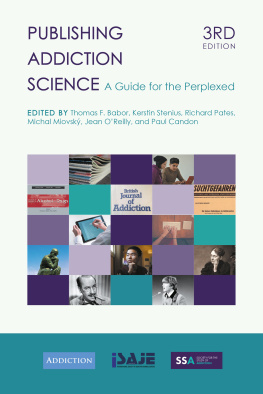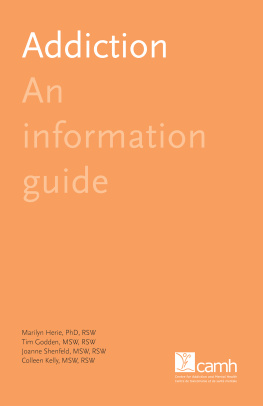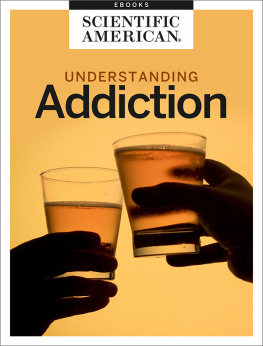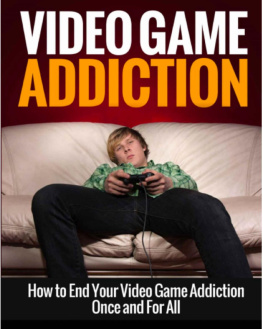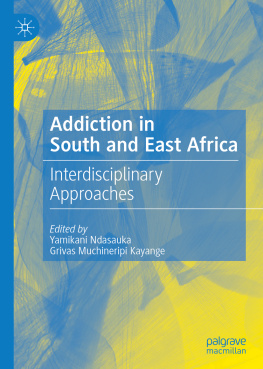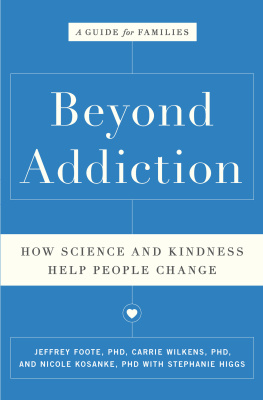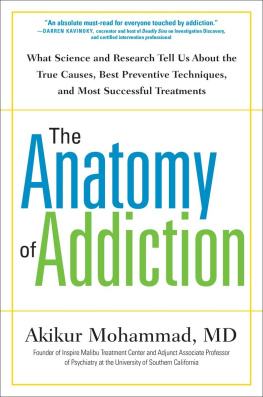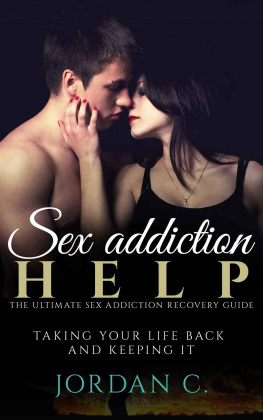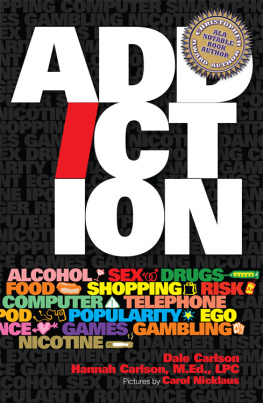Contents
Publishing Addiction Science: A Guide for the Perplexed
Third Edition
Edited by
Thomas F. Babor, Kerstin Stenius, Richard Pates, Michal Miovsk, Jean OReilly and Paul Candon
Published by
Ubiquity Press Ltd.
6 Windmill Street
London W1T 2JB
www.ubiquitypress.com
Text The Authors 2017
First published 2017
Cover design by Amber MacKay, developed from 2nd Edition cover by Matthew West of Vasco Graphics. Images used in the cover design were sourced from Pixabay and are licensed under CC0 Public Domain.
Reproductions of journal covers and logos used with permission.
Printed in the UK by Lightning Source Ltd.
Print and digital versions typeset by Siliconchips Services Ltd.
ISBN (Paperback): 978-1-911529-08-8
ISBN (PDF): 978-1-911529-09-5
ISBN (EPUB): 978-1-911529-10-1
ISBN (Mobi): 978-1-911529-11-8
DOI: https://doi.org/10.5334/bbd
This work is licensed under the Creative Commons Attribution 4.0 International License (unless stated otherwise within the content of the work). To view a copy of this license, visit http://creativecommons.org/licenses/by/4.0/ or send a letter to Creative Commons, 444 Castro Street, Suite 900, Mountain View, California, 94041, USA. This license allows for copying any part of the work for personal and commercial use, providing author attribution is clearly stated.
The full text of this book has been peer-reviewed to ensure high academic standards. For full review policies, see http://www.ubiquitypress.com/
Suggested citation:
Babor, T F, Stenius, K, Pates, R, Miovsk, M, OReilly, J and Candon, P (eds.) 2017 Publishing Addiction Science: A Guide for the Perplexed. London: Ubiquity Press. DOI: https://doi.org/10.5334/bbd. License: CC-BY 4.0
To read the free, open access version of this book online, visit https://doi.org/10.5334/bbd or scan this QR code with your mobile device: | 
|
We dedicate this book to two people
who changed addiction science for the better:
Lenka ablov (1986 2016) and Griffith Edwards (19282012)
Contents
Foreword to the Third Edition
The health and social burden attributable to psychoactive substance use is enormous. Alcohol, tobacco and illicit drug use taken together are by far the most important preventable risk factors to a populations health. According to the latest WHO estimates, the harmful use of alcohol alone results in around 3.3 million deaths every year. With rapid social and cultural changes taking place in many countries, alcohol and drug use are becoming increasingly embedded in social matrices, often with strong commercial forces playing a role in promoting the use of legal intoxicating and dependence-producing substances. A number of jurisdictions have undertaken major changes in the regulation of psychoactive substances controlled under international drug treaties. New Psychoactive Substances (NPS), with their health effects and distribution channels, present new challenges for public health authorities. Debates around alcohol and drugs are at the forefront of social policy processes in many countries, with significant variations in societal responses. Unfortunately, these debates are often not based on solid data or research evidence, and in many cases the relevant data simply does not exist. Significant caveats exist in the evaluation of existing policy responses and policy changes made in different jurisdictions. There is an urgent need to strengthen the evidence base for the development of adequate program and policy responses to substance use and substance use disorders at different levels.
It is difficult to overestimate the role of research and scientific data in shaping policy and program responses at all scales, from local communities to the international level. A consistent and common issue is the lack of sufficient resources for research on substance use and substance use disorders, and very often even those resources available are not utilized to their maximum potential. One of the biggest problems is when investment in research does not result in the publication and dissemination of results, preferably in peer-reviewed journals. This is a particularly prevalent issue in less-resourced countries where opportunities for publishing results of research on substance use and substance use disorders are limited, and where no specialized journals on addiction exist.
The third edition of Publishing Addiction Science: A Guide for the Perplexed is an important resource for researchers around the world, especially for those who work in low and middle-income countries. It is hoped that this resource will facilitate the dissemination of new data and knowledge in this area, given that research remains very much skewed towards a limited number of high-income countries with well-developed research and publishing infrastructures. The International Society of Addiction Journal Editors (ISAJE) continues to work towards increasing the publishing competence of researchers from all over the world, with this work often being implemented in consultation with our program in the World Health Organization. Such efforts make a significant and much needed contribution to capacity building in research on substance use and substance use disorders, particularly in less-resourced countries, and the WHO Department of Mental Health and Substance Abuse welcomes the third edition. We look forward to continued collaboration with ISAJE in this area.
Dr Shekhar Saxena
Director
Department of Mental Health and Substance Abuse
World Health Organization
Preface
An Idea Whose Time Has Come
The development of this book had many complex motives but a single purpose. The motives include improving scientific integrity in the field of addiction studies, sharing information with junior investigators, and strengthening addiction specialty journals. The single purpose of this volume, however, is to provide a practical guide to scientific publishing in the addiction field that is used often enough to affect personal decisions, individual careers, institutional policies, and the progress of science. The time is ripe for such an ambitious undertaking: The field of addiction research has grown tremendously in recent years and has spread to new parts of the world. With that growth has come a concomitant increase in competition among researchers, new bureaucratic regulations, and a growing interest in addiction research by health agencies, policy-makers, treatment and prevention specialists, and the alcohol industry. New professional societies, research centers, and university programs have taken root, and regulatory responsibilities such as conflict of interest declarations, human and animal subjects assurances, and the monitoring of scientific misconduct are now common.
The journal-publishing enterprise, the main organ of scientific communication in the field, has an important role to play in all of these developments, and the third edition of Publishing Addiction Science is designed to meet this need. The inspiration for the first edition of this volume came from the International Society of Addiction Journal Editors (ISAJE), which is not only the first society for addiction journal editors, it is also the first international organization specifically devoted to the improvement of scientific publishing in the addiction field.
From its inception, ISAJE has recognized a need for ethical guidelines for member journals. There are several reasons why ethical issues are particularly important in the addiction science field. Strong industries, such as pharmaceutical manufacturers, tobacco companies, and alcohol producers, have important financial interests to protect, and they pay special attention to the work of addiction scientists. Further, many addiction-related issues are politically loaded, a situation that could affect the objectivity of researchers. Many of the individuals who are the object of addiction research are vulnerable and in need of special protections. Finally, the field of science has become much more ethically challenging because of its growing importance and complexity. Although ISAJE offers a set of ethical guidelines, abstract policy statements and moral pronouncements are rarely read carefully or applied to the day-to-day business of conducting research and communicating ideas to the scientific community. This book aims to improve transparency in addiction publishing and, in the process, show how young investigators can negotiate the complex and sometimes bewildering ethical challenges faced on the path to a successful career in the field.

